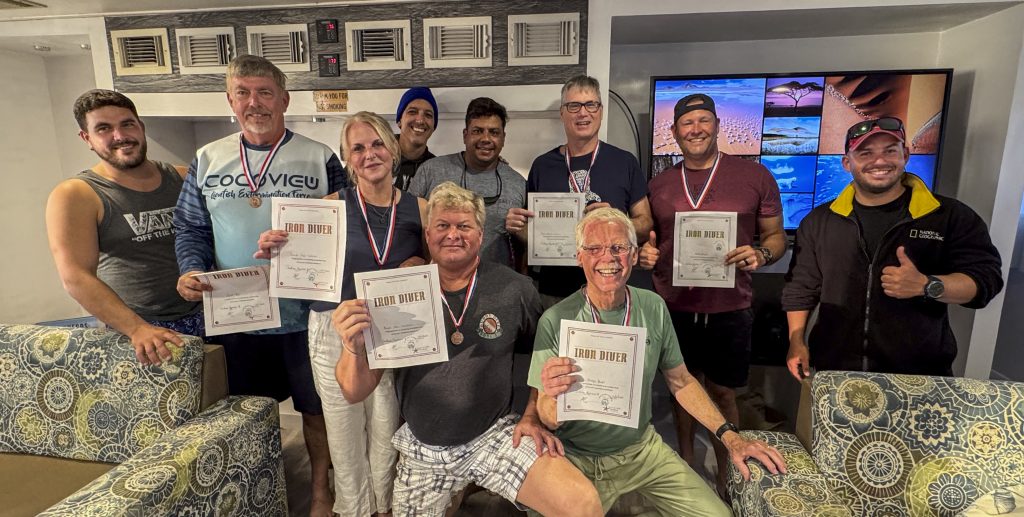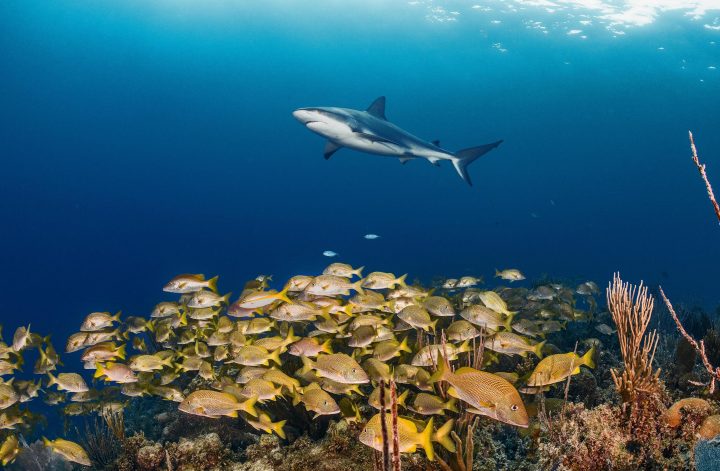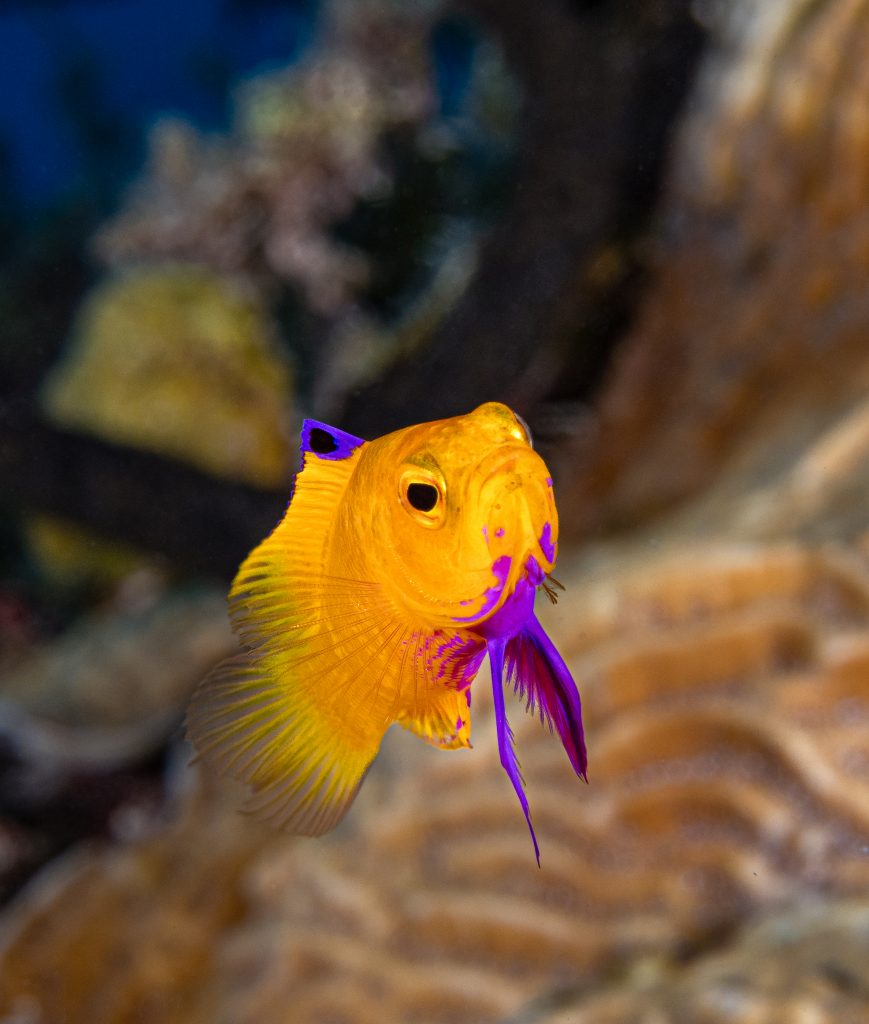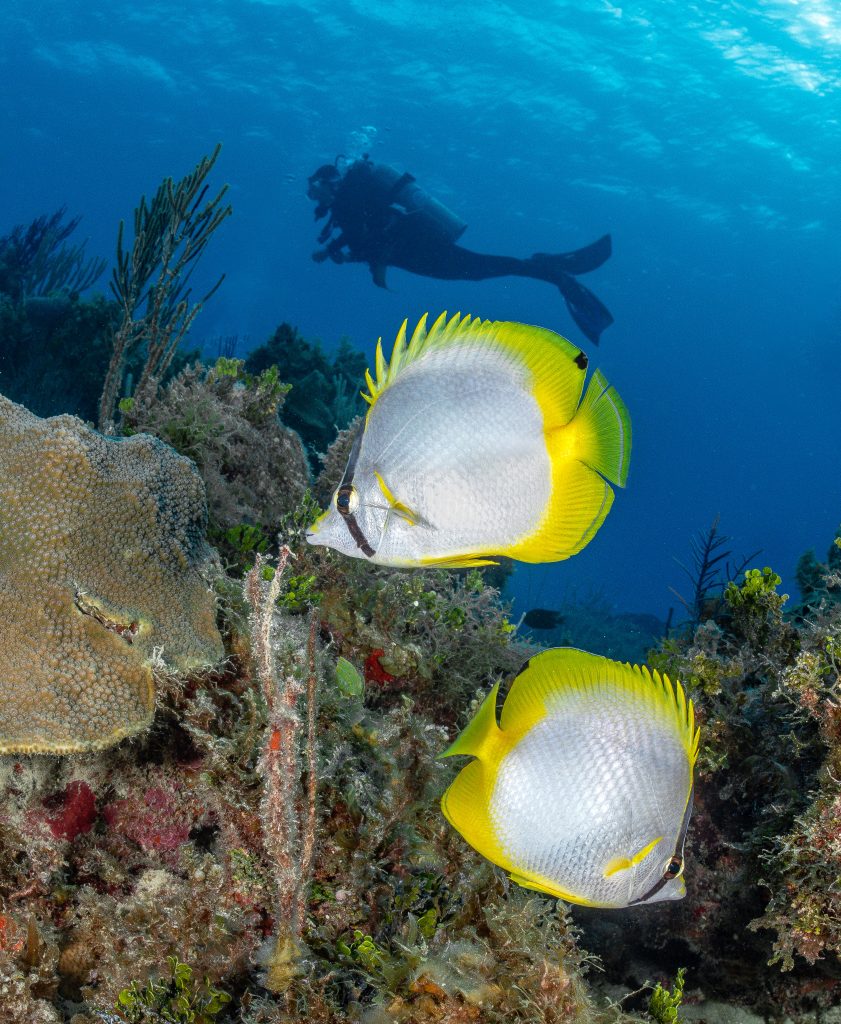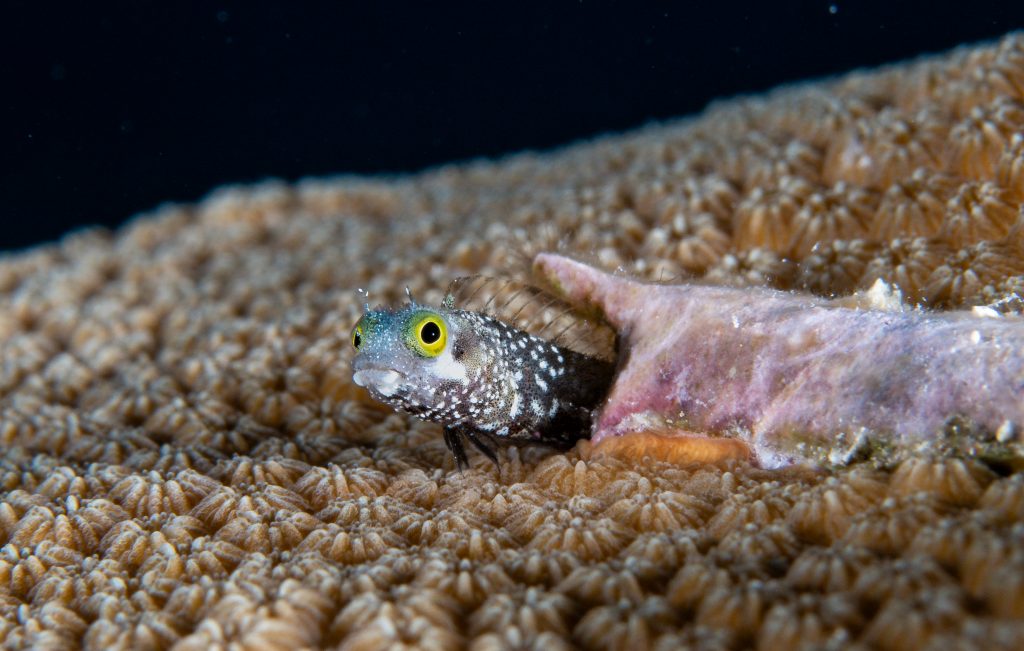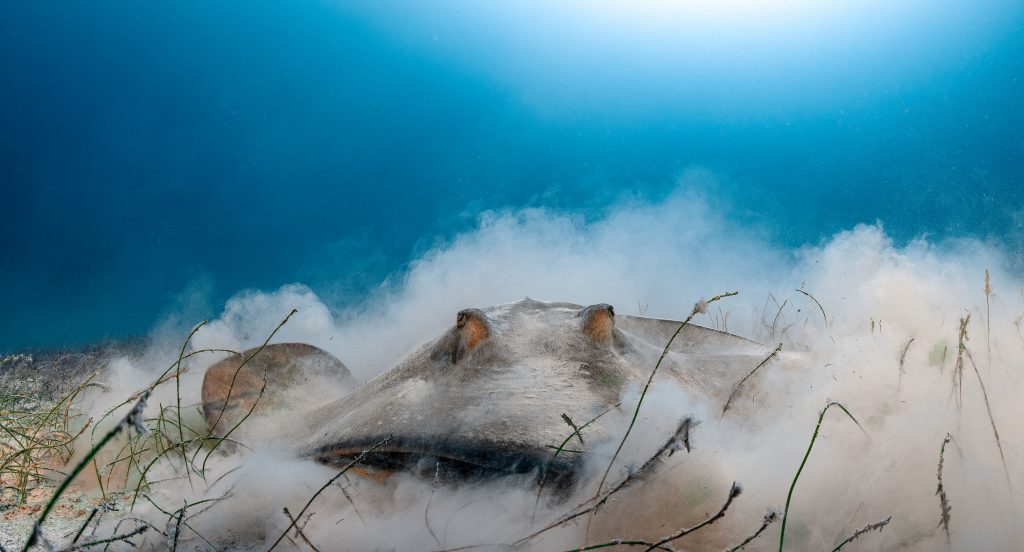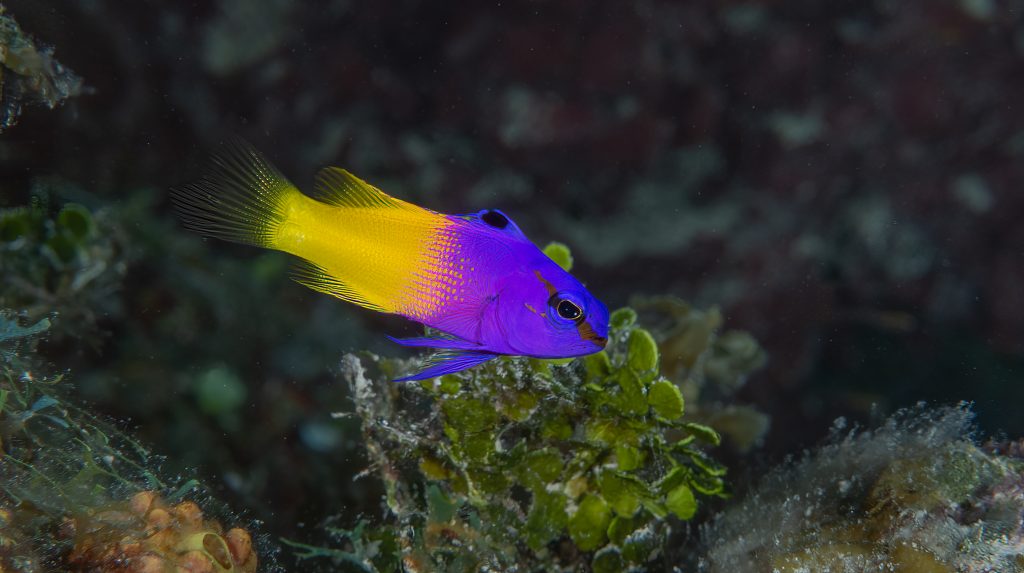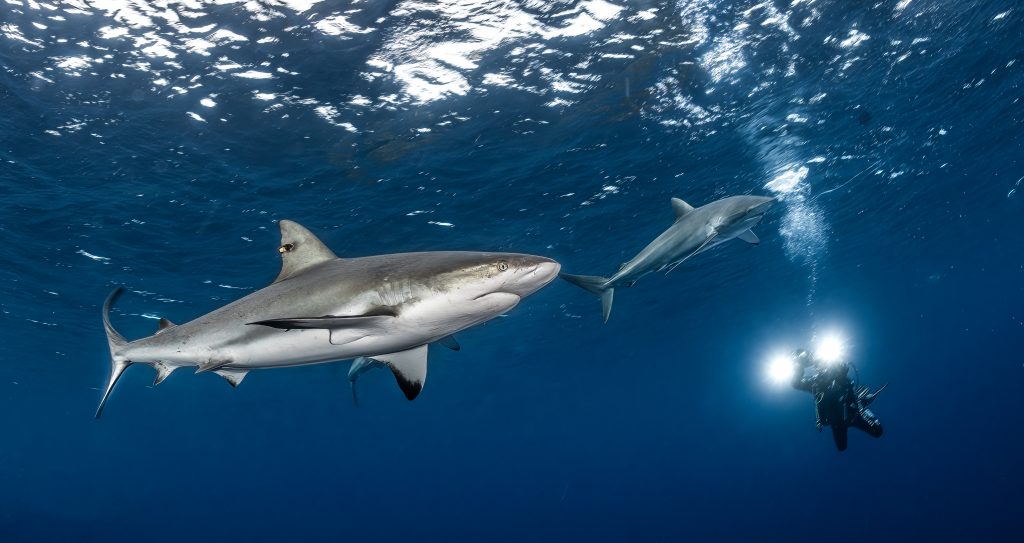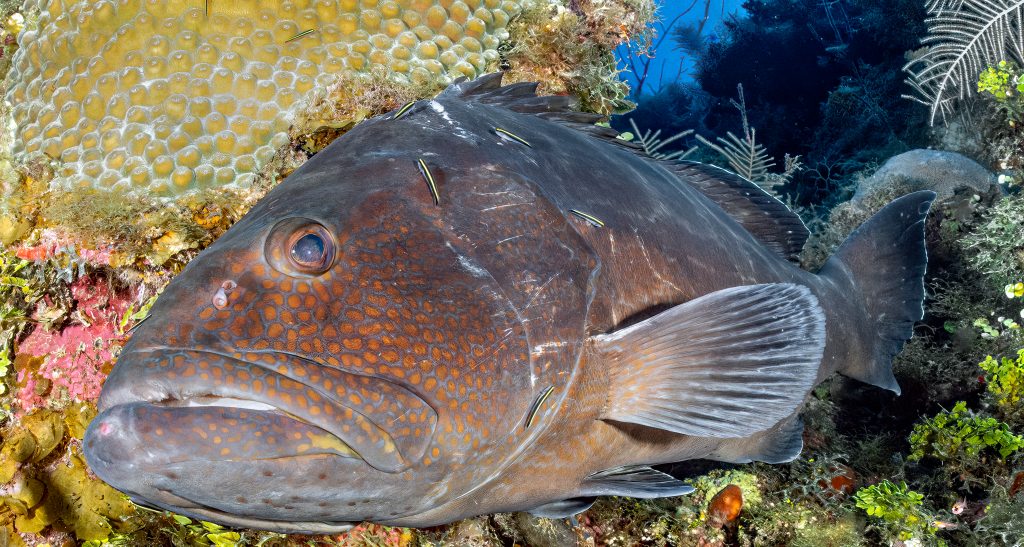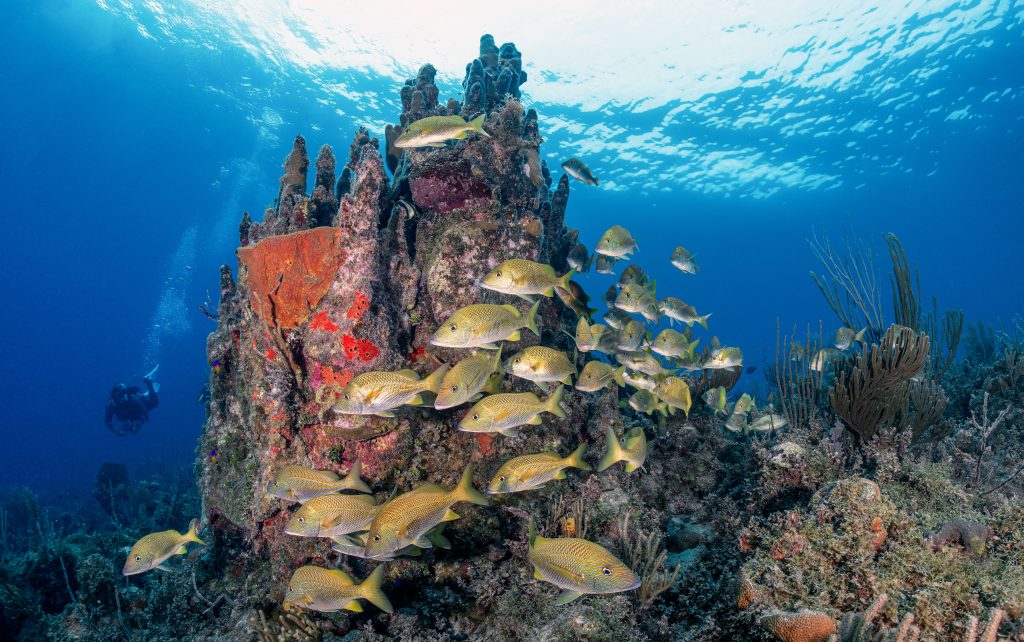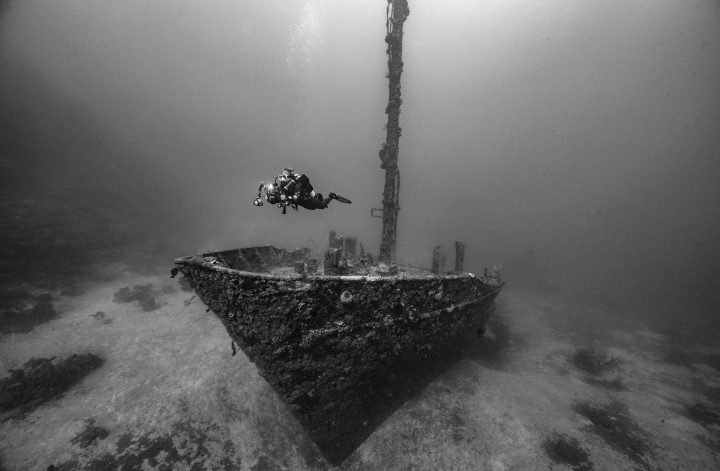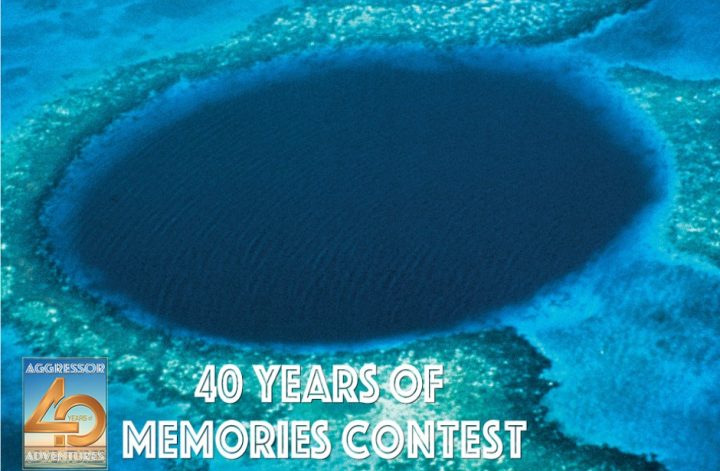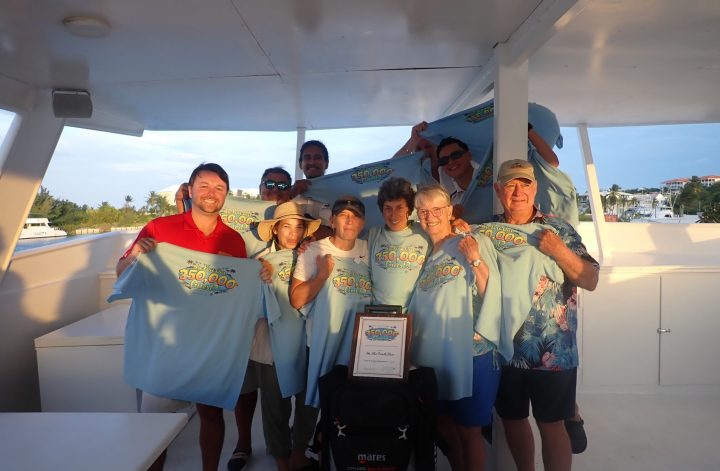By Mark B. Hatter
On 24 April 1494 explorer Christoper Columbus, on his second trip to the “New World,” arrived at the southern end of a large crescent shaped island in the central Caribbean. “Juana” was the name Columbus gave to the island he discovered during his first voyage in 1492. The Taino, an indigenous seafaring people of the Caribbean, called the island “Cubao,” their word for “where fertile land is abundant.”
Indeed, the explorer found Juana/Cubao and its adjacent islands “fertile and abundant” during his 1494 summer expedition. Sometime during that exploration period Columbus happened upon an archipelago of unusual beauty sixty miles southeast of Cubao’s southern coastline. Running in a straight line, like a verdant necklace, the archipelago’s 600 islands and cays stretched from southeast to northwest for 93 miles, straddling the edge of Cubao’s continental shelf.
From above the necklace presented as a spectacular vista of dense, green mangrove islands and sugar-sand ringed cays, intersected by emerald shallows and aquamarine channels, all funneling to the indigo edge of Cubao’s oceanic drop-off. Equally as spectacular from below (although unknown to Columbus and others until the twenty first century) colorful fish swarmed coral pinnacles, slopes, canyons and vertical walls, and amassed in giant schools along the crest of the reef carpeted in pastel-hued soft and stoney corals.
In celebration of its majestic beauty, ironically only half of which he could see above the waterline, Columbus named the archipelago “Jardines de la Reina,” Spanish for “Gardens of the Queen” in honor of Isabella I of Castile, the Queen of Spain.
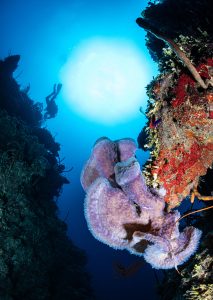
In 1519 Cubao, or Juana, was officially recognized by cartographers as “Cuba.” And literally since the fifteenth century Cuba and its magnificent “Queen’s Gardens” have largely remained as pristine as in the days of the Taino and Columbus, mostly escaping the insidious degradation of human progress, although not entirely by design.
Politically, Cuba has been a pariah state since 1959 as a result of Fidel Castro’s revolutionary coup. With Castro’s communist take over of the country, virtually all twentieth century progress ground to a halt as international sanctions choked domestic growth to a standstill. Ironically, the international deep freeze, while terrible for economic Cuba, has preserved rural and coastal environmental Cuba in an almost pre-industrial-revolution state leaving Jardines de la Reina virtually untouched.
In 1996 the Cuban government recognized the treasure of the Queen’s Gardens and established a marine reserve covering a large swath of the archipelago. In 2010 the reserve was officially converted to a national park, the Parque Nacional Jardines de la Reina, further cementing environmental protections for 840 square miles of the region. Metaphorically, the Queen’s Gardens designation as a national park will ensure Viva la vida Jardines de la Reina, keeping the archipelago “alive and long lived” into the future.
* * *
Over the last two decades direct travel to Cuba by Americans to visit and dive the Jardines de la Reina has been an on-off-on again proposition depending on which political party resides in the White House. It’s an unfortunate and unnecessary vacillation (Americans can visit Cuba via a third country in off-again years) which has not proved to move the needle politically for Cuba in a positive direction.
Still, notwithstanding cyclical, arbitrary closures of Cuba to Americans for direct travel, the Jardines de la Reina is definitely a bucket list destination for every diver even if required to arrive there via transit from a third country.
Currently, Cuba is open to US travelers with direct flights from Miami, Florida, and I was fortunate to book the Jardines Aggressor II (JAII) for a seven day trip in early January 2025. This was my second visit to the Queen’s Gardens, my first being a fly fishing trip in 2018 where three divers were also on our liveaboard. Their daily Go-Pro videos of monstrous Caribbean Reef Sharks, lap-dog friendly Goliath Grouper and shoals of snapper gave me an insatiable itch to return some day as a diver.
Finally, my arrival into Camaguey province directly from Miami was, as before, a step back in time. Horse drawn carts and the occasional, impossibly operational, circa 1950’s automobile ferried locals on the mostly empty single lane road to the coast. On our bus a cultural guide (typically a professional, like a doctor, who can earn more guiding on chartered buses) gave us the run down on Cuba’s economics and history, from the initial revolution to sugarcane and tobacco production, to the ethnic diversity of the Cuban people. It was both enlightening and sadly sobering given the continued economic hardship of the wonderfully friendly Cuban people.
We arrived to the JAII at dinner time, dined on an amazing dinner of grilled, fresh spiny lobster, then settled into our spacious rooms for an overnight crossing to the Queen’s Gardens after sorting our dive kits and camera rigs on the boat’s massive dive deck.
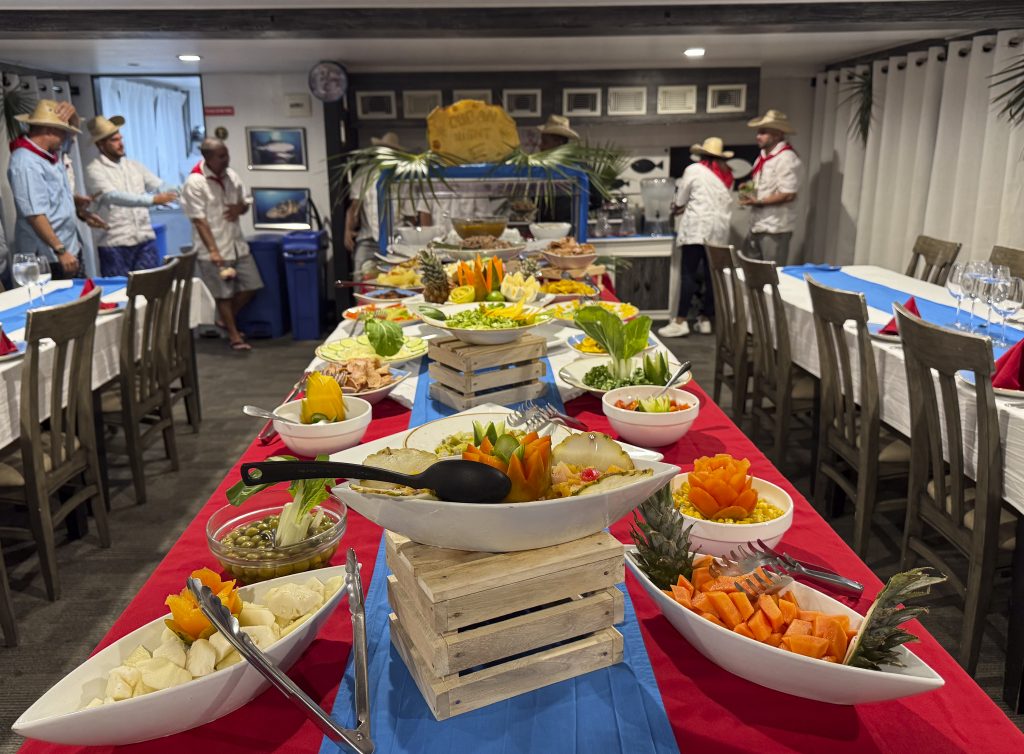
At 7:30am the following morning we dropped into the crystal blue water at a shallow site named Montana Rusa to check our kits. The water temperature was a uniform 78 degrees, typical for January and cool enough for most of us to don 5-mil wetsuits with hooded vests. Thus, adjusting our buoyancy on our inaugural dive was critical.
Montana Rusa was just five minutes from the JAII via the high speed, twin engined transport boats independently maintained within the park’s boundaries by contracted captains. Once aboard our dive kits never left the large, covered boats for the duration of the trip making transfer from the JAII to the transports and back again comfortable on old knees.
Like all of the dive sites along the Queen’s Gardens Montana Rusa was marked with a large, permanent white buoy. What struck me at this site and, every other site, was the exceptional visibility we encountered, which often exceeded 120 feet. Surprisingly, there was a noticeable absence of current at every dive location. This made sense as tides push perpendicular to the archipelago verses parallel thus, any current is wind driven and results in nothing more than a light drift.
Park policy limits the number of visitors to the Queen’s Gardens each year, including divers. Accordingly, there is only one other diving operation, and during our week long expedition we never encountered other divers on any site within the entire archipelago.
Diving Jardines de la Reina was some of the easiest, most enjoyable diving I’ve done over my lifetime! Between the exceptional visibility, nonexistent current, massive fish populations and depths of mostly no more than 70 feet, the Queen’s Gardens are perfect for novice and experienced divers alike.
While 70 feet or less was standard, there are a few locations along the shelf in the northwestern corner of the park where the wall seemingly drops to infinity. At a site named Farallon I initially dropped to over 100 feet to shoot the prolific, colorful tube sponges adorning the canyon’s walls adding divers in the image above to add a sense of scale. Farallon has a famous, narrow cleft at 80 feet between two massive reef structures just wide enough for a single diver to pass at a time. One by one we made our way through the passage then ascended to the top of the reef where at 45 feet we were greeted by a loose aggregation of Caribbean Reef Sharks, ubiquitous within the Queen’s Gardens, and a three hundred pound Goliath grouper!
While I missed my image opportunity of the Goliath, late in the dive our guide waved me over to the far end of the wall where he’d located a large, black grouper at a goby cleaning station. Thankfully, the fish was more interested in continuing its therapeutic exfoliation allowing me to close in with my wide angle kit for the shot.
Regardless of the the sites or the depths we dived one feature arguably separates Cuba from any other destination in the Caribbean; the abundance of large, top tier predators. Caribbean Reef Sharks are nothing if not abundant, and on many dives we encountered double digit numbers. Impressively, they are variable in size depicting a natural population under sustained park protection. The same is true for the grouper populations. Groupers of many different species are common at every site with again, a surprising number of large, old, adult animals. Observing such numbers and size diversity reminded me of what a fully, healthy fish population should look like.
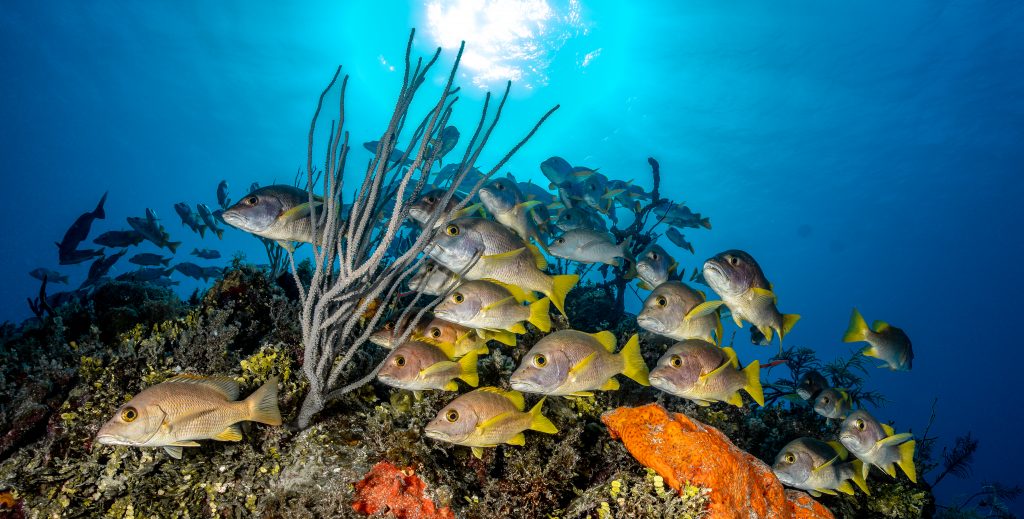
Another signature feature of the Queen’s Gardens is the sheer number of schooling fishes. Snapper, grunts, porkfish, surgeonfish and creole wrasse swarm the shallows along the crest of the walls or slopes presenting huge photo opportunities near the end of each dive as we work our way to our safety stops. So prolific are the numbers I found it exceedingly difficult to shoot any other photography method than wide angle!
But the macro photography opportunities at the Queen’s Gardens cannot be dismissed. The strikingly beautiful Cuban Fairy Basslet is endemic only to the south coast of Cuba and is the perfect critter for mace photography. But its distribution in the Gardens is rare. One of my first missions was to ask our dive guide to please let me know if we had a chance to see this fish during our cruise, in which case I would shoot the dive with a macro lens kit.
As luck would have it our guide knew exactly where a single Cuban Fairy Basslet was located from having seen it diving the site named Cabezo de la Raya the previous week. When we eventually dived the site he found the diminutive Cuban Fairy Basslet amid a swarm of common Fairy Basslets along a wall at around 60 feet. Happily, I captured my images but lamented the macro kit when we encountered enormous schools of snappers and porkfish along the reef crest at our safety stop.
So impressive were the schools of fish in the shallows at Cabezo de la Raya, the rest of our dive group lobbied our guide to take us back to the site later in the week. And the next time we dived there I was properly armed with a wide angle kit to record the phalanx of snappers and porkfish.
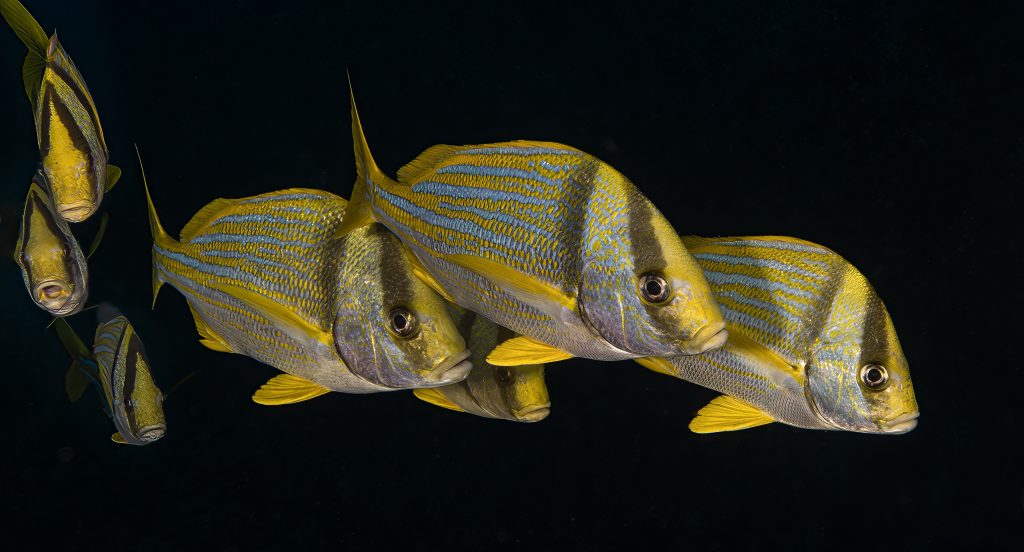
While diving is almost always conducted around the pinnacles or along the walls and slopes, the site named Octopus Cave is an entirely different dive. The limestone shelf on which the archipelago sits is porous with at least one cave (Octopus Cave) connecting the reef top to a cay or channel somewhere in the lagoon.
The connection is evidenced by the salinity, temperature and water clarity difference between the cave sink and entrance from that of the nearby open ocean. There was a massive school of French Grunts in the sink in front of the cave but shooting the school proved difficult in the more turbid water. However, better visibility inside the cave allowed me to shoot a few images of my dive buddies as they explored the entrance.
The Jardines de la Reina is also a bucket list destination for fly fisherman chasing tarpon and other species on the shallow flats between the islands and cays. Thus, my hope was that tarpon might also be a photo opportunity on the outside reefs. The Queen’s Gardens did not disappoint.
At sites named Mambo #5 and Five Sea, tarpon commonly school around and under large, deep overhangs in the reef wall at around 50 feet. Shooting tarpon is a tricky proposition as their metallic scales reflect like mirrors often blowing out otherwise perfectly balanced images. Fortunately, the tarpon populating the Queen’s Gardens are approachable to the extent I was able to make numerous setting adjustments to get the “Goldilocks” exposure.
With up to four dives a day, it can be tough to muster energy for the last dive of the day. But mush on we must and I was glad I made the fourth dive at a site named Mariflores where we found several relaxed sea turtles totally amenable to posing for our cameras.
For six spectacular days, the Jardines de la Reina put on an unexpected show of brilliant pageantry. Regardless of the dive site, colorful angelfish and diminutive butterflyfish seemed to always make cameo appearances between the parade of sharks and schooling fish. On the sandy bottom beyond the slopes and walls, we often found stingrays resting or rummaging for tasty morsels hidden within the sand. And every brain coral, with their hosted tiny cleaner gobies, became a makeshift cleaning station should we wait long enough for a customer to arrive.
The motto of the Aggressor Fleet is Dive, Eat, Sleep. On the JAII we ate like royalty as if invited by Queen Isabella I of Castile herself; from fresh fish to spiny lobster (three times!), from center cut steaks to pulled pork. Of course we dived as much as we could muster with several guests earning the coveted Iron Diver Award for completing every dive. As for me, I was happy to clap for their achievement just before I headed off to sleep!
Viva la Jardines de la Reina! What more can I say?
by: Mark B. Hatter
